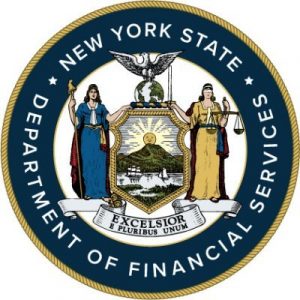 As cybersecurity threats continue to pose significant risks to businesses and organizations, staying updated with regulatory changes is crucial. On November 1, 2023, the New York State Department of Financial Services (NYDFS) introduced amendments to its cybersecurity regulation, 23 NYCRR 500, also known as Part 500. These updates come with a structured timeline for compliance, affecting a broad spectrum of entities, including Small Businesses, Class A Companies, and Covered Entities. Here’s what you need to know about the changes and how to stay compliant.
As cybersecurity threats continue to pose significant risks to businesses and organizations, staying updated with regulatory changes is crucial. On November 1, 2023, the New York State Department of Financial Services (NYDFS) introduced amendments to its cybersecurity regulation, 23 NYCRR 500, also known as Part 500. These updates come with a structured timeline for compliance, affecting a broad spectrum of entities, including Small Businesses, Class A Companies, and Covered Entities. Here’s what you need to know about the changes and how to stay compliant.
Key Compliance Dates and Requirements
Immediate Changes and Reporting Duties
As of December 1, 2023, all entities covered by the regulation are mandated to report cyber incidents, such as ransomware attacks, to NYDFS. This new requirement underscores the need for enhanced incident response strategies and transparent communication with regulatory bodies.
Upcoming Compliance Deadlines
Looking ahead, a significant deadline looms on April 15, 2024. By this date, all companies must submit a Certification of Material Compliance or, if necessary, an Acknowledgment of Noncompliance. Entities unable to certify material compliance must provide a detailed account of the areas in which they fell short, the extent of their noncompliance, and their plans or progress toward remediation.
Comprehensive Compliance by April 29, 2024
By the end of April 2024, Covered Entities and Class A Companies must meet the broader requirements of amended Part 500. This includes but is not limited to, conducting thorough internal risk assessments at least annually or following significant operational or technological changes. Companies must also adhere to updated protocols for testing, monitoring, training, and auditing their cybersecurity measures.
New Amendment Document - Read More
Adopting a Risk-Based Approach
Under the amended Part 500, achieving material compliance doesn't imply perfect adherence to every aspect of the regulation. Instead, it encourages organizations to adopt a risk-based approach to evaluate their specific needs and identify any gaps in their cybersecurity practices. This process involves a careful analysis of current security measures and adjusting them to align with the regulatory expectations and the unique risks facing the entity.
Resources and Support
To aid in this transition, NYDFS has provided extensive guidance, including training materials and a frequently asked questions (FAQ) section. These resources are invaluable for understanding the nuances of the regulation and ensuring that your organization meets its legal and ethical obligations.
Conclusion
The amendments to NYDFS’s cybersecurity regulation signal a move towards more stringent and proactive cybersecurity governance. For businesses operating within the scope of Part 500, understanding these changes, marking critical compliance dates, and utilizing available resources will be key to navigating this regulatory landscape successfully. By embracing these requirements, businesses can not only comply with legal standards but also strengthen their defenses against the ever-present threat of cyberattacks.
For more insights and assistance with cybersecurity compliance, stay connected with Critical Path Security. We are here to help you keep your data safe and your operations secure.
